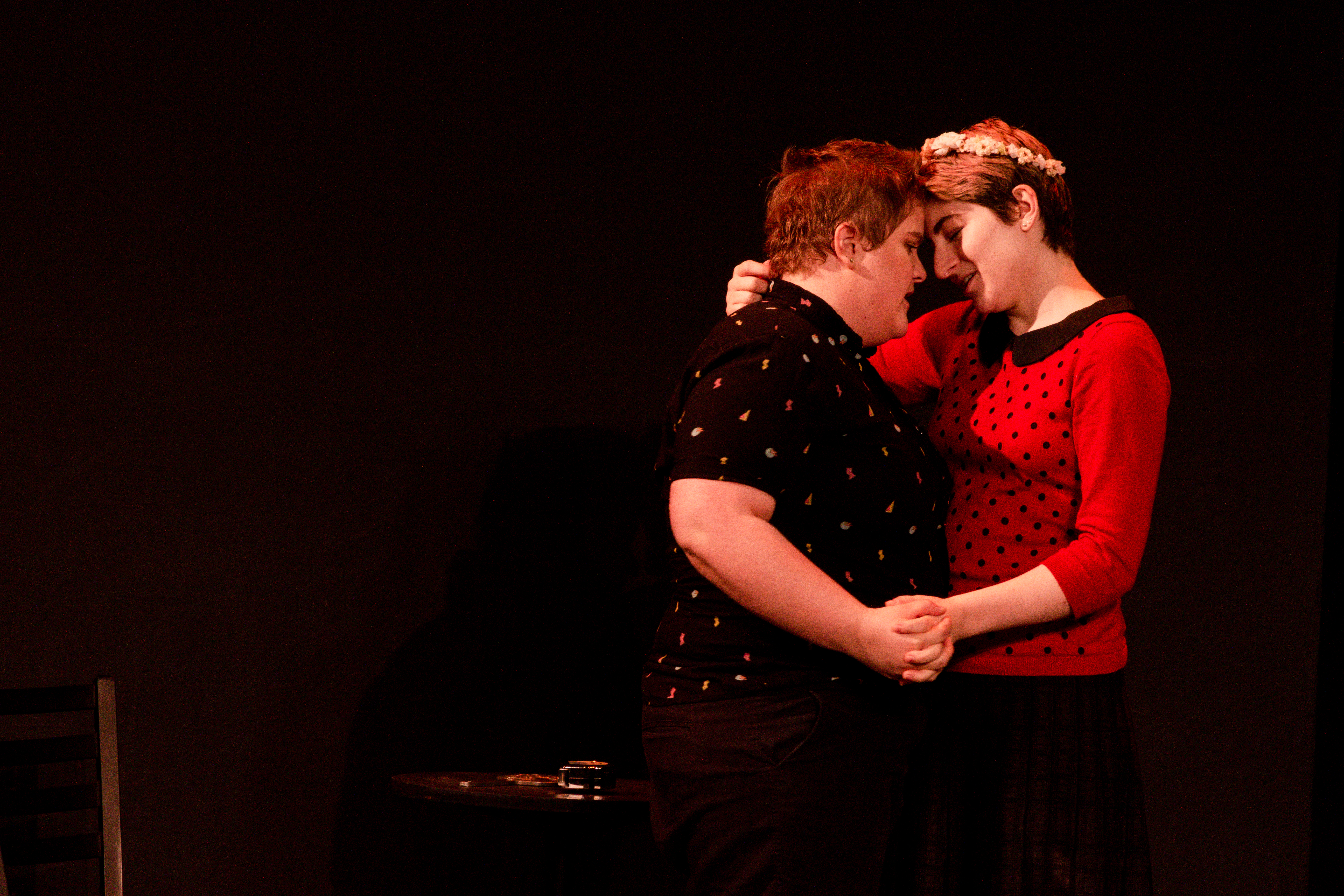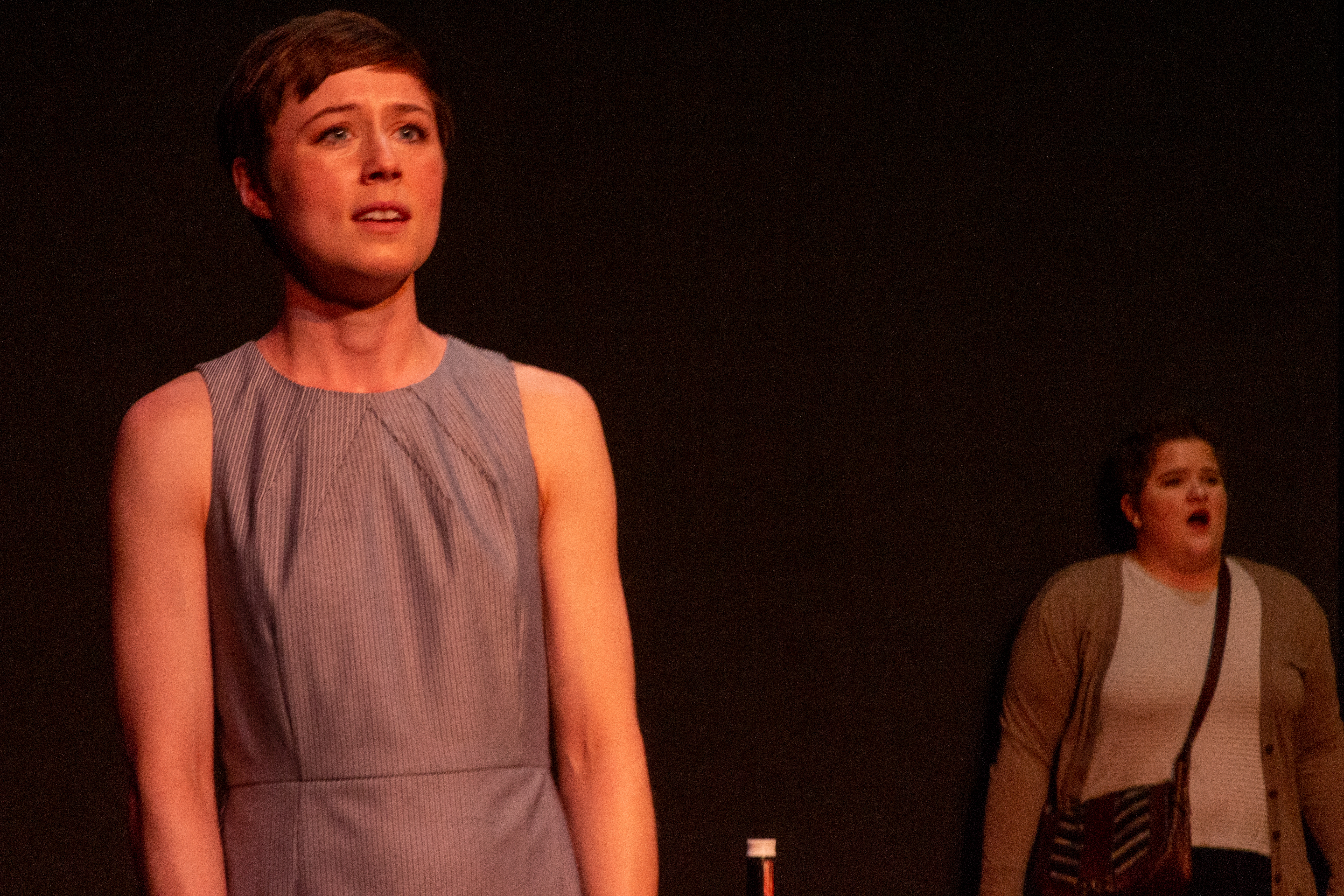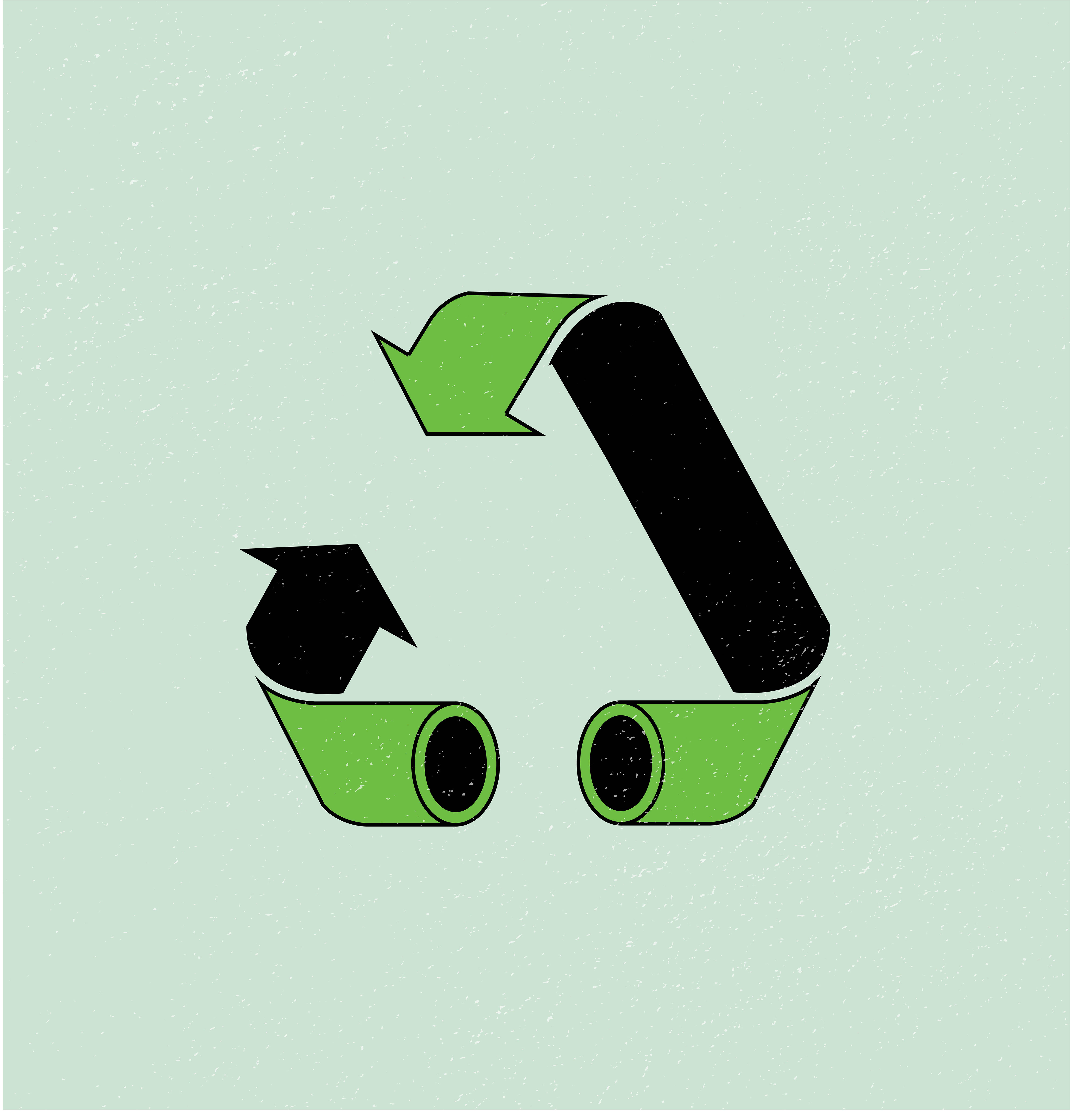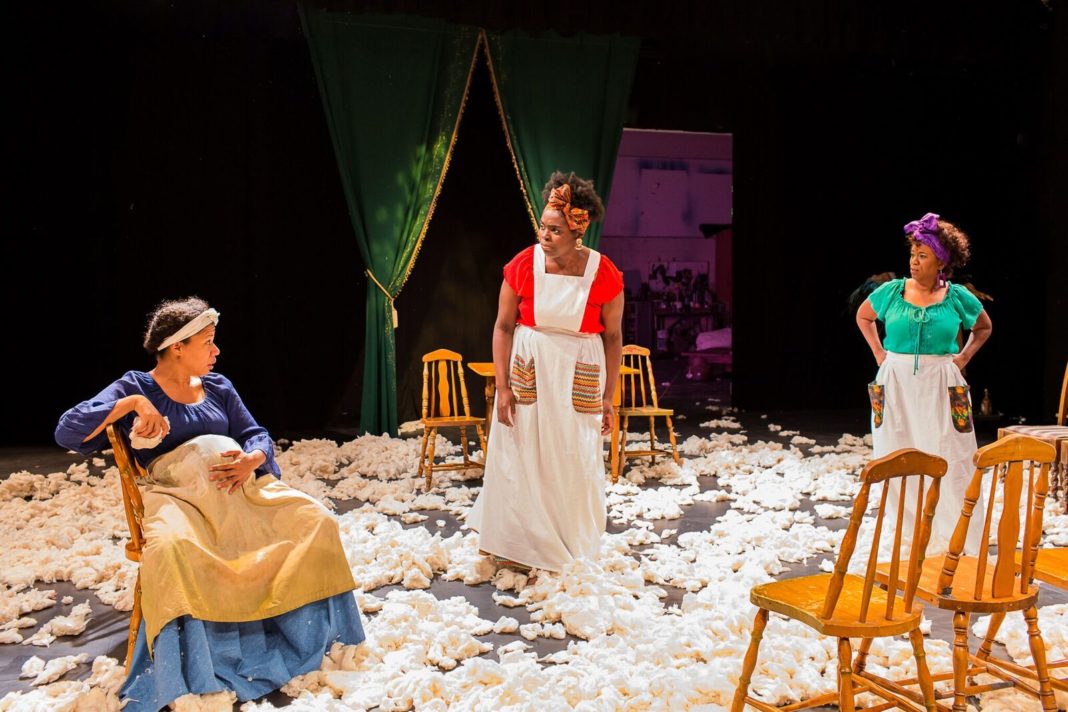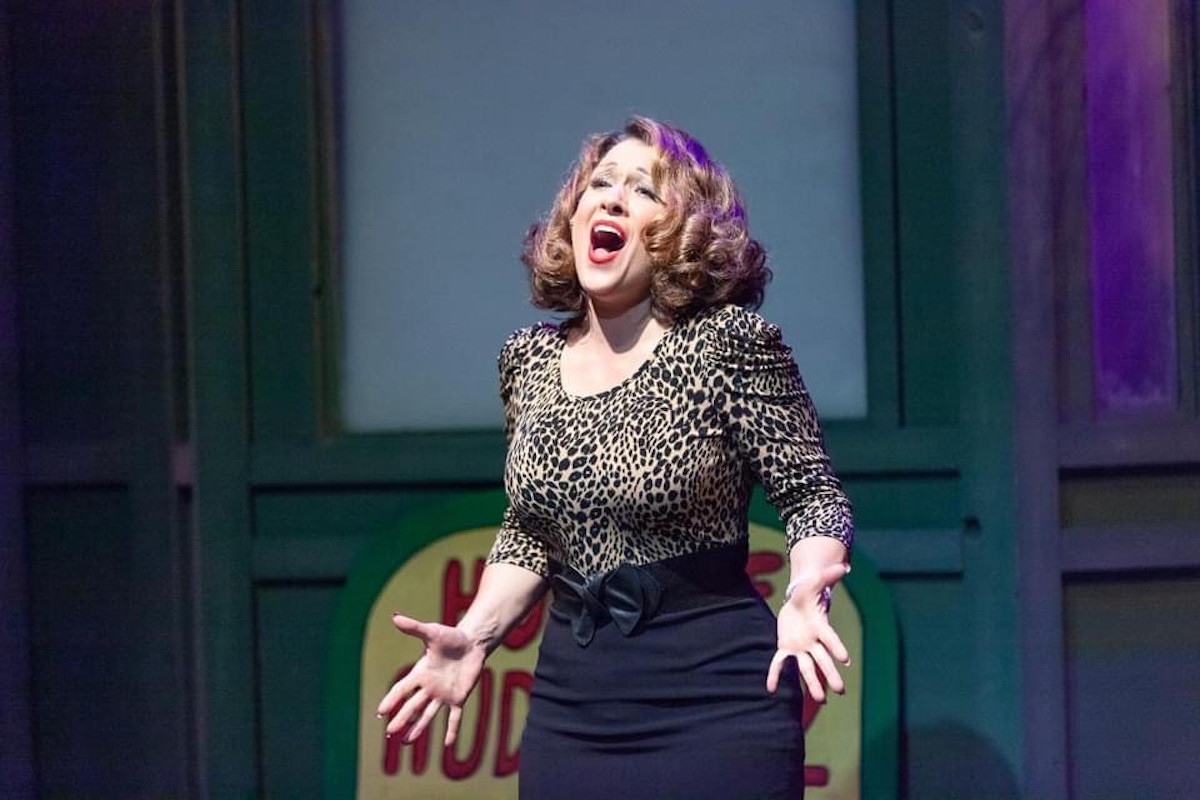Seven people assemble on a bright stage in the Lincoln Hall Studio Theater, wearing white collared shirts, jeans and black boots. Performer Jena Viemeister steps forward and begins to sing “Grace” by Michael Wilson Thomas: “Thanks to whomever is there for this tasty plate of herring / If you please, won’t you pass me whatever’s still left of this tasty treat we’re sharing.” As she sings, she struts around the stage, locking eyes with and smiling at her fellow singers of the Queer Opera Experience.
It was a tender opening to the concert, a supplement to previous night’s performance of famous opera scenes. Typically, art songs are performed by one vocalist accompanied by a pianist, but here, performers gather onstage and sing to each other about love and heartbreak.
The Queer Opera Experience in some ways sprouted from La Femme Boheme, a production of Giocomo Puccini’s opera in Austin, Texas, featuring an all-female cast. Directors Chuck Dillard and Rebecca Herman saw the success of Femme as an opportunity to explore queer possibilities within the operatic canon. Last year, they put up posters around campus and formed a cast of seven Portland State students, all of whom gave great performances at both shows.
Night one contained a variety of queer’d opera scenes: the openings of Mozart’s Marriage of Figaro and Così fan tutte (commonly known in English as All Women Do It), Puccini’s La Boheme, Richard Strauss’ Adriane on Naxos and Leonard Bernstein’s Trouble in Tahiti. Couples quarrel and couples reconcile. Old, jaded Don Alfonso, played by Helen Soultania, questions whether any woman is faithful. In Trouble in Tahiti, Sam and Dinah (played by Viemeister and Samantha Peters), fantasize about what their lives would be like outside of a loveless marriage. The art songs followed the next day, and the show ended with a Q-and-A session about the project.
At the session, some of the members discussed why they joined. Queer performers need space to be part of roles that make them feel more comfortable within their own lives. Historically, opera has been heteronormative: Male-female relationships dominate the canon, forcing queer performers to assume a straight identity in order to get roles and make a living. The queer characters that do exist in opera are scant and may play to viscous, outdated stereotypes. Countess Geschwitz from Alban Berg’s Lulu and a couple of cross-dressing comedies are pretty much the only roles that come to mind.
Allowing queer opera singers to express their true sexuality onstage opens up new performance possibilities; rather than becoming a character, the character becomes them and their own queerness. “Seeing what can be done with [the Queer Opera],” said pianist Karey Miles, “and pushing the boundaries of what is expected within classical music—which is so steeped in tradition—gives me the courage to let my singers sing this music in a way that is not gender-specific or puts them into a specific box.” Not all members are themselves queer, but they were willing to join in.
Even in the back row, the choreography, singing and facial expressions were clear. I’ve never experienced this level of intimacy at an opera concert. The people behind the characters were apparent. No longer were they stuck with codified personality traits; the characters now reflected aspects of the actors’ personas.
Rebecca Yakos talked about playing the role of coquette Musetta in La Boheme and how the character became an outlet for her own flirtatiousness, which may not always be a part of her daily interactions. All members of the opera stated how freeing the opportunity was for them.
Gender and sexuality are like performances; we assume the role of a man, woman or neither, through our clothing, voice or behavior. But these categories are never fixed: They evolve constantly, and no one fits neatly into a predetermined category. By including queer voices in the operatic canon, we see shades of difference in human relationships that move beyond the typical male-female social expectations.
Someone more acquainted with opera may find this all a bit jarring; I didn’t, though, because most of my prior opera experience involves taking a nap halfway through The Magic Flute (I’m deeply sorry, Herr Mozart.) Though Figaro was written for a bass voice, the beautiful harmonies between Figaro and Susanna remain when Figaro’s part is sung by an alto. Besides, transposing vocal music to fit a singer’s range is a fairly standard practice, and no one considers that a distortion of the composer’s intent.
The music for all the scenes was left intact, save for the vocal ranges. Changing the gender of a character may do very little for a cisgender straight audience, but could mean the world to a queer one. Treating these works as untouchable relics alienates young audiences who are itching for music that speaks to them. I have met many queer people who are huge fans of classical music but feel left out of an industry still dominated by men. Representation is essential so young people have role models to look up to, and having a greater breadth of voices and perspectives help move music and performance art forward. Thus, if we want to see more nights like this, we need to support each other at smaller venues and take on the classics in an exciting new way.
The two performances proved that queer opera works in concept and in practice. In the future, Dillard is planning larger productions, hosting lectures and symposia and commissioning new works while still retaining a tight, central cast.
“I would like to see more art songs and interaction, and it would be good to get the community more involved, even with a full production,” Miles said. “Chuck and Rebecca had a big hit in Austin with La Femme Boheme. This has great momentum, and the community of support is there both among queer artists and the greater artistic community. This is something I think people really need right now.”


